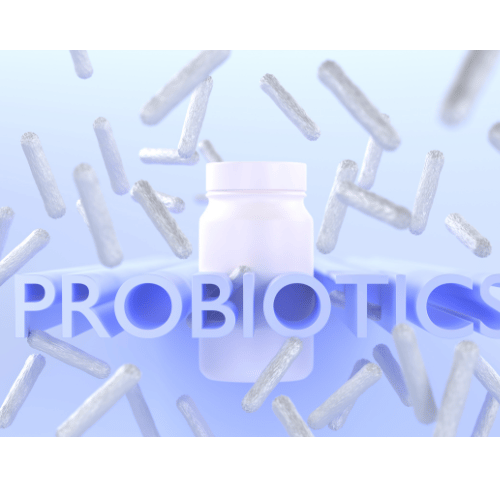Healthy Food
Healthy eating and physical fitness go together, but there are no magic foods that cause you to be one hundred percent healthy by just eating the one food.
Health Foods
Healthy eating and physical fitness go together, but there are no magic foods that cause you to be one hundred percent healthy by just eating the one food. No, you need a variety of foods from each of these food groups each day. It's also important to watch the portion size so as not to overeat. Make your mealtimes pleasant and relaxed occasions and your healthy foods will work effectively with your healthy emotions to give you a healthy body.
Berries
You may like all types of berries or just one or two favourites, but you can never go wrong by adding a few fresh berries as a quick energy snack or frozen berries made into a luscious smoothie in place of calorie laden desserts. Berries are high in vitamin C across the board, but some are high in other nutrients as well. Choose ripe blueberries for vitamin C and heaps of anti-oxidants for the health of your circulatory system. Gogi berries are less well-known but are wonderfully rich in many of the nutrients your body needs to be nutritionally and physically fit.
Citrus
The foods of the citrus family are widely recognised as a valuable source of vitamin C. Choose fully ripe citrus fruits for the best nutritional value and choose citrus as near to the tree as possible. Tree ripened fruits picked at the peak of perfection and consumed with hours of picking give you the top nutritional rating. Try grapefruit for breakfast. Add a dash of fresh squeezed lime to your salad as a dressing and enjoy slices of orange with coconut in a light honey dressing for dessert.
Vegetables
The variety of vegetables is amazing. For people who are vegetarian or vegan, choosing vegetables to be part of a nutritionally sound diet is a way of life. Your vegetable group provides many of the minerals required in a good diet. For example, you may realize that potassium is necessary for healthy nutrition. Many people claim the benefits of potassium found in a single banana. But did you know, you can also get adequate potassium in your diet by eating a stalk of broccoli? Try a salad of fresh young spinach topped with pine nuts and stirred with lightly cooked penne'. Feta cheese and a light vinaigrette dressing to create the perfect light luncheon meal.
Whole Grains
Like many other of the best foods, choosing only one type of whole grain for your meals doesn't provide all the variety you need to be nutritionally sound. Often, mixing two or more whole grains together will give you complete proteins. For example, brown rice and wheat kernels with a spicy seasoning are a popular dish in many countries.
Salmon
Salmon is lean fish and nutritionally one of the best fish choices. It is rich in Omega-3 oils that are noted as helping improve the functioning of the brain. Salmon baked whole with just lemon or lime as a seasoning makes a fantastic main dish or a hearty luncheon featured menu item. Salmon is also commonly found in chilled seafood dishes.
Legumes
A legume is the name for a variety of fruits with a single dry seed. Legumes are sometimes called pods. Examples of edible legumes are soybeans, peas, dried beans and peanuts, among others. Legumes are rich in iron and high in fiber, making them excellent nutritional choices. Peanuts are a type of legume that have been used to make hundreds of different products some edible and others with various types of helpful uses.
Nuts and seeds
Nature has packed a lot of goodness into small packages. Most everyone has heard of walnuts and pecans which are very good nutritional products, but did you realize that flax seeds are brain food--containing critical non-meat sources of the Omega-3 oil.
Lean proteins
The keyword here is lean. Australians eat far too much protein compared to the rest of the world. Cut down of portion sizes--85 grams will provide all the needed protein needed for your day. Also, trim all visible fat from your protein source. Alternatively, use non meat substitutes such as the complete proteins found in vegetable dishes like beans and brown rice.
Tea
Depending on the type of tea you prefer, you can get an energy boost from a cup of green tea, or the calming effect of chamomile tea. Get going with mint teas or start your day with Earl Grey Breakfast Tea. Herbal teas are soothing, tasty and good for you. Non herbal teas will help you to stay alert when you need help to function.
Olive oil
Olive oil is probably the healthiest substance you can use to keep fat in your diet. You can use it on your salad, mix it with a little vinegar to create your own, or fry other foods in the hot oil. Just make sure that the temperature is not too hot so that the oil is broken down.


2 Steps to Six Pack Abs
First off, for most people, getting six pack abs is not an easy task.
It requires dedication, but it is possible!
Below is a general 2-step guide that, if followed religiously for 3 months, will produce results.
Step 1: Nutrition
This is the single most important part of the puzzle, no question. You can have the most impressive set of abs, but if they're covered with a layer of fat, you won't see them! Break up your day with 5 or 6 mini-meals because this jump starts your metabolism. And stop eating the food that is preventing results: white bread, loads of pasta, soft drinks, sweets, fast food, hydrogenated oils and sugars.
Instead, replace them with foods that will help you reach your goal: oatmeal, olive oil, whole grain breads, fruits, vegetables, nuts, eggs, natural peanut butter, chicken, fish, protein and water. Be realistic- you'll slip here and there, but make a conscious effort to radically improve your eating habits, because getting a six pack will be impossible if you don't.
Step 2: Exercise
You need to focus on with 3 different exercises: cardio, weightlifting and ab exercises.
And aim to workout 3- 4 times a week.
The cardio you do can be anything: walking, running, bike riding, swimming....whichever cardio you don't mind doing so that you'll stick with it. Aim for 30-45 minutes, a minimum of 2 times a week.
Weightlifting is important because 1 kilo of added muscle burns as many calories as a 1 kilometre run...and this is while you're just sitting around! Aim for 30-45 minutes, a minimum of 2 times a week.
The last exercise you need to incorporate into your workout is ab exercises. Aim to work your abs a minimum of 3 times a week. There are many different ab exercises you can do, so try to find 3 or so that you enjoy doing so you can have a variety.
Tip: vary your workout routine every 2 weeks to keep your body guessing and changing. Add or take away different weight or ab exercises, or at the very least, vary the weight, reps or form of cardio you do.
Follow the above dilligently for 3 months , and while results will vary from person to person, you will experience improvement.
It will take dedication on your part, but imagine the feeling you'll get when you look in the mirror and like what you see.


Acidophilus: To eat or not to eat?
Who knows what acidophilus is?
It is not the mystery it used to be and these days more and more people understand the benefits of acidophilus.
Experts explain that acidophilus is a nutritional supplement product, often added to milk or sold as a capsule, which aids in digestion. Acidophilus contains one or more bacteria, such as Lactobacillus acidophilus (A), Lactobacillus casei (C), Lactobacillus bulgaricus, Bifidobacterium bifidus (B) and Streptococcus thermophilus.
It is estimated that in our gastrointestinal tract live more than 400 different kinds of bacteria. The body depends on beneficial bacteria to manufacture B vitamins as well as to produce lactose and other antibacterial substances.
According to some scientists, acidophilus contains bacteria that have a symbiotic, or mutually beneficial, relationship with the human stomach. Experts explain that these bacteria help break down complex food molecules and inhibit the growth of harmful bacteria. Acidophilus is useful for people with bacterial or digestive problems or yeast infections, as well as people on antibiotics. Products that contain acidophilus are generally known as probiotics.
Acidophilus history says that many years after Louis Pasteur discovered pasteurization, the method of heating milk to kill harmful bacteria, Elie Metchnikoff researched and discovered the health-promoting capabilities of lactobacillus bacteria and observed that people who ate yogurt tended to live longer.
This won him a Nobel Prize in 1908 because of his work demonstrating an apparent link between Lactic Acid Bacteria, the ones included in Acidophilus, and extended lifespan.
| Powered by Kaptol Media


